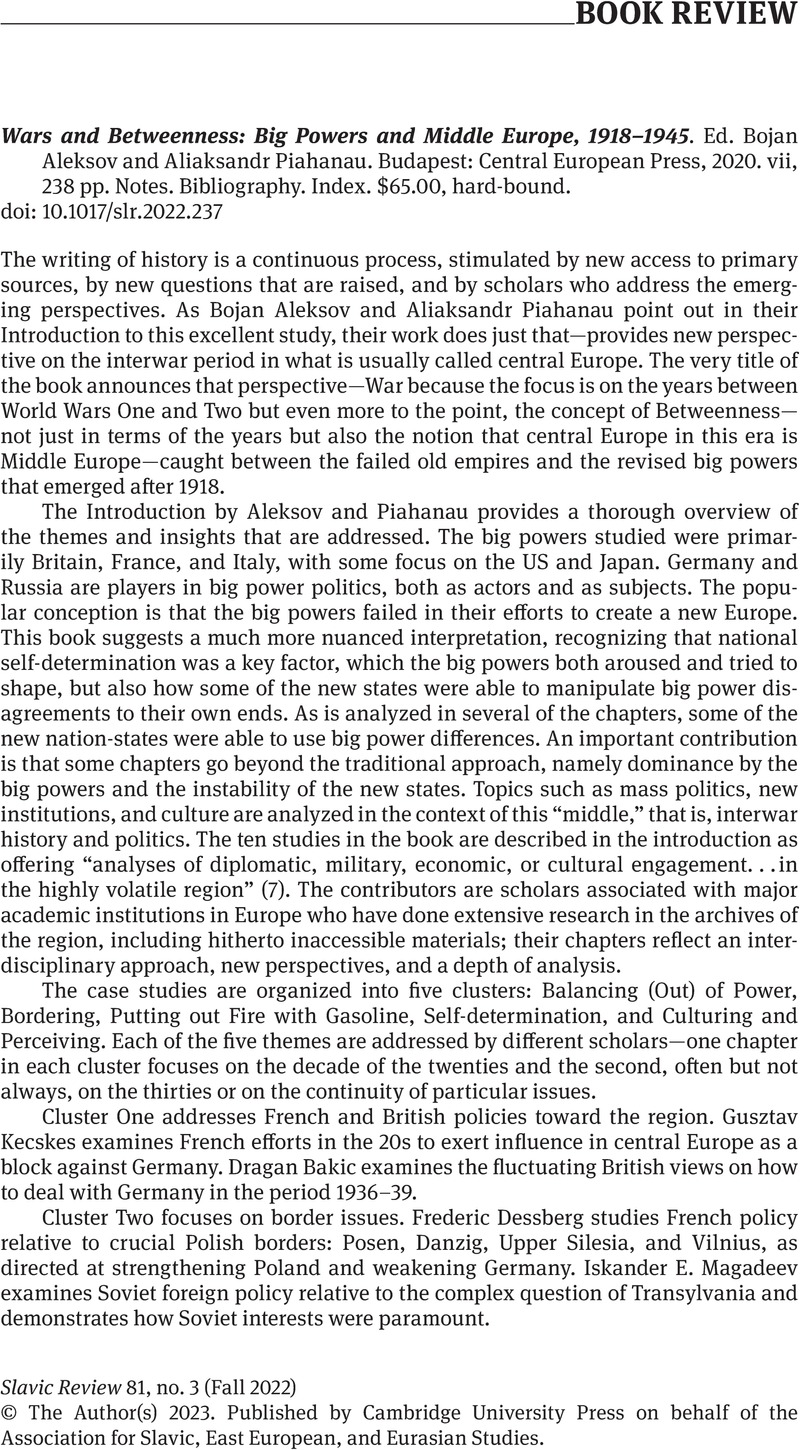No CrossRef data available.
Article contents
Wars and Betweenness: Big Powers and Middle Europe, 1918–1945. Ed. Bojan Aleksov and Aliaksandr Piahanau. Budapest: Central European Press, 2020. vii, 238 pp. Notes. Bibliography. Index. $65.00, hard-bound.
Review products
Wars and Betweenness: Big Powers and Middle Europe, 1918–1945. Ed. Bojan Aleksov and Aliaksandr Piahanau. Budapest: Central European Press, 2020. vii, 238 pp. Notes. Bibliography. Index. $65.00, hard-bound.
Published online by Cambridge University Press: 07 February 2023
Abstract
An abstract is not available for this content so a preview has been provided. Please use the Get access link above for information on how to access this content.

Information
- Type
- Book Review
- Information
- Copyright
- Copyright © The Author(s), 2023. Published by Cambridge University Press on behalf of the Association for Slavic, East European, and Eurasian Studies

